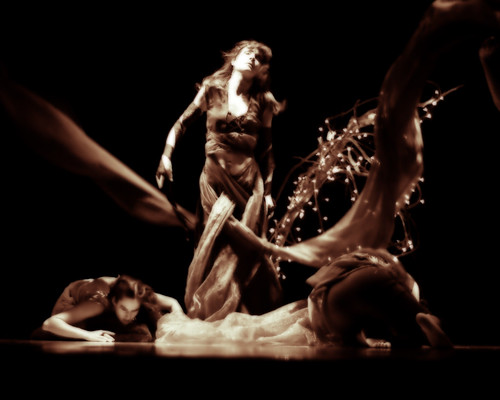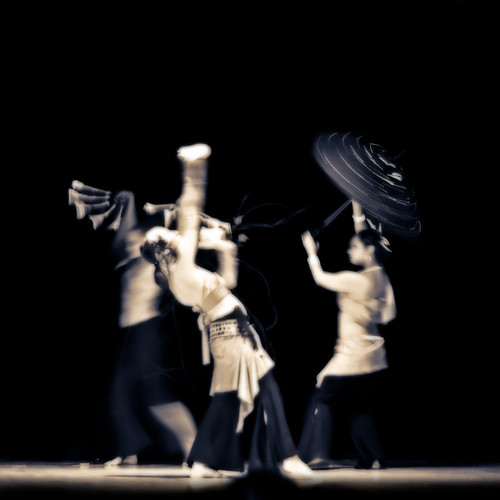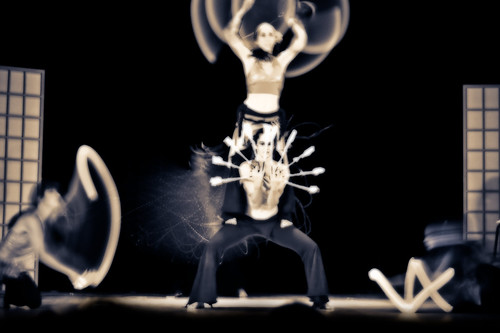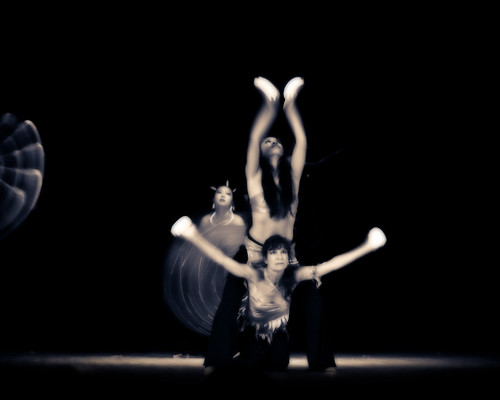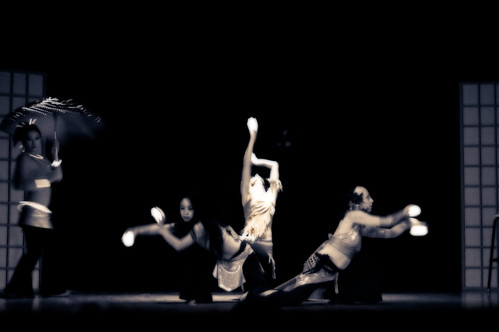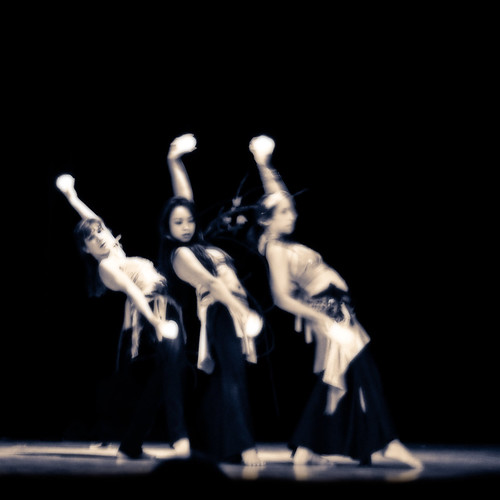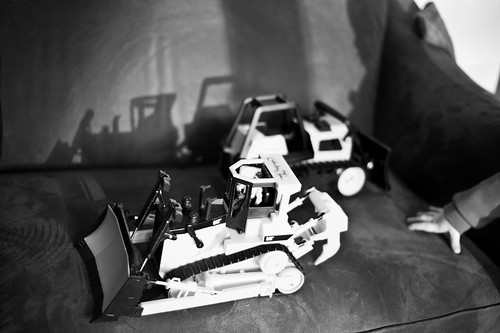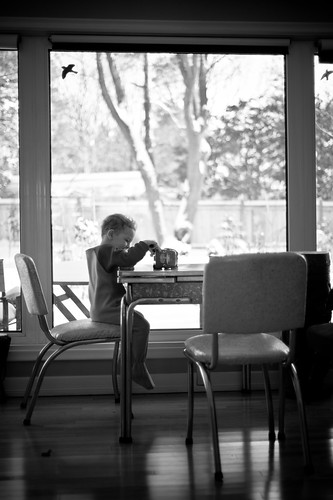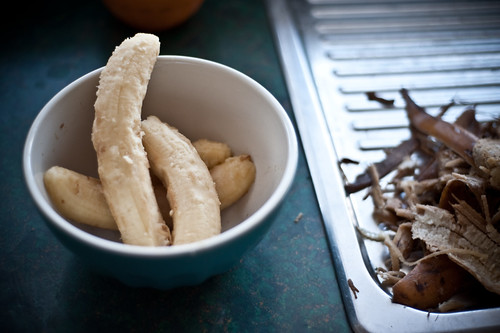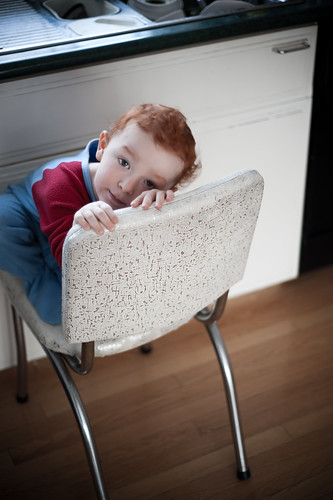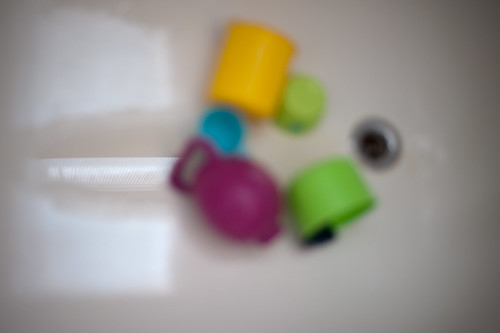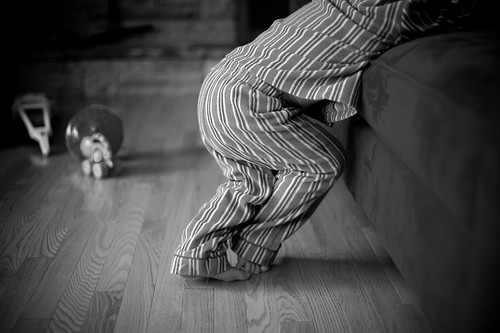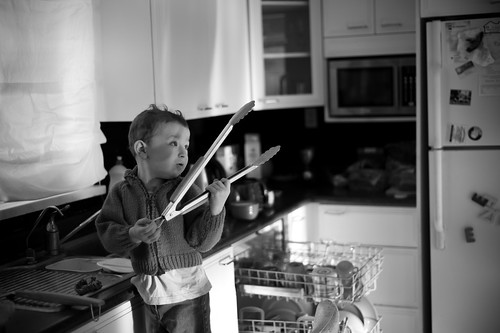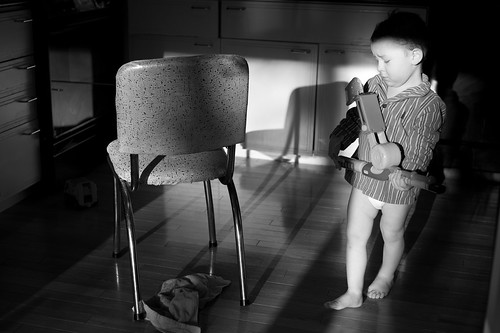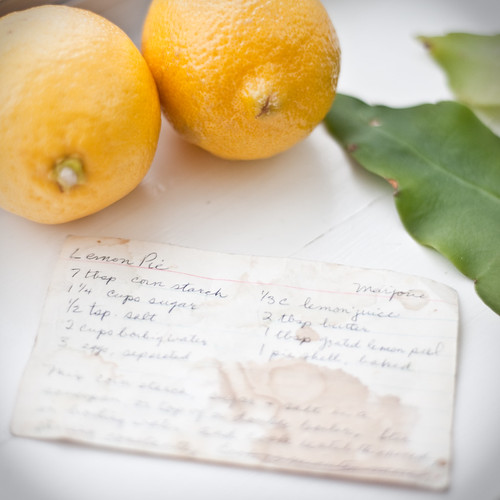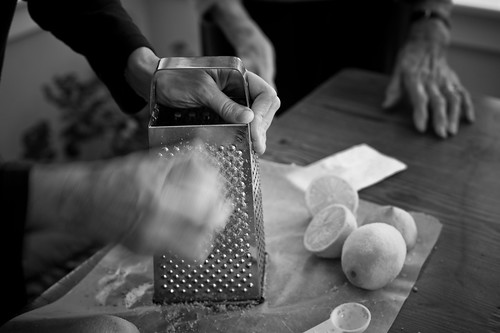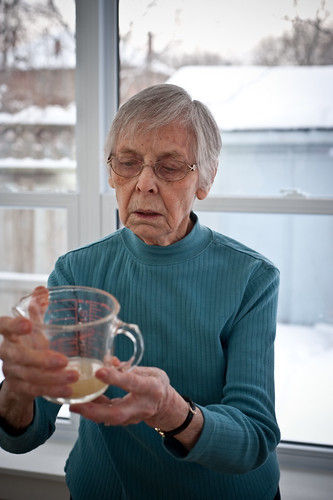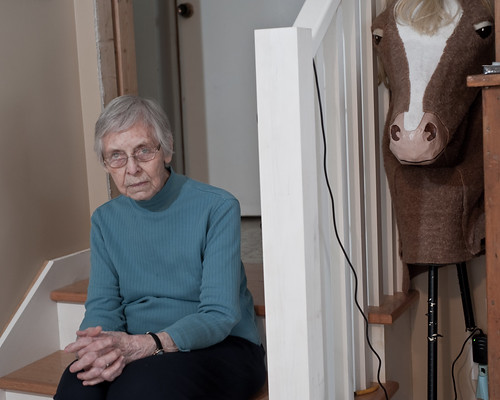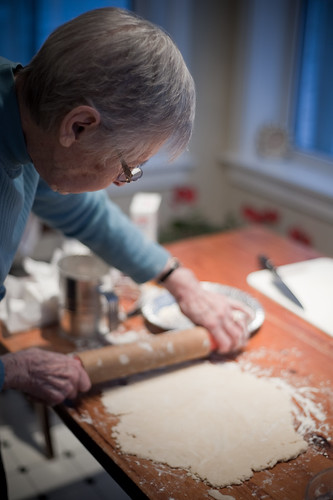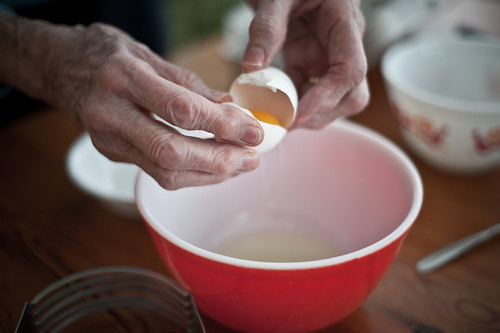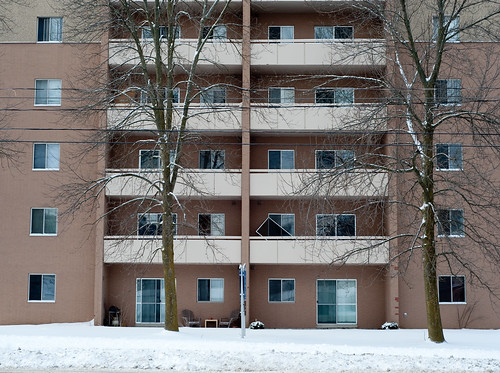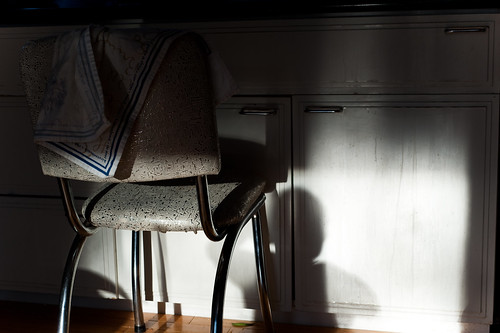If I fall behind in blogging, then everything gets so jumbled up in my head that I can’t seem to compose a coherent post. So you’re going to get an extremely long, rambling, incoherent post.
On Saturday, I went the local youth drop-in centre, which has a gallery afternoon on weekends, before I started my volunteer shift at the (adult?) drop-in centre. The youth centre is run by Edward Pickersgill, whose name keeps popping up everywhere. He was the NDP candidate in (I think) the last provincial election (or maybe the one before that – at any rate I voted for him). He runs a housing resource centre as well as the youth centre, and he’s been advocating strongly for a youth shelter ever since June 2007 when the youth shelter closed suddenly and under strange circumstances. I’ve known his name for a long time, but I’ve never taken the time to match his name with his face – until a few months ago.
Rewind to October 2007: Outside the housing resource centre, which also had a drop-in program for youths, I saw some kids sitting on the sidewalk. I talked with them for a bit about the need for a youth shelter, and asked if I could take their picture.
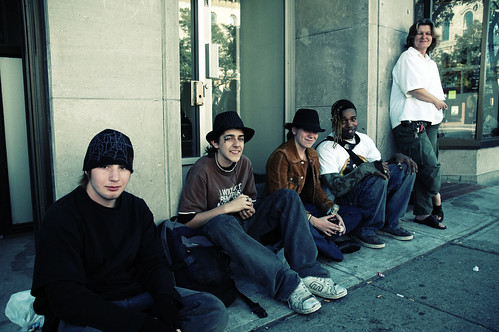
I turned around and saw this:
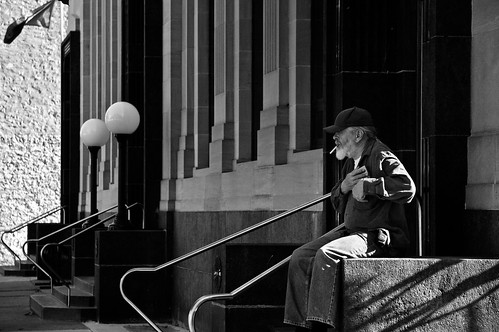
Sometimes when I get excited by what I’m seeing, I yell inside my head, “Seriously?!?” like an intern in Grey’s Anatomy. Sometimes I just can’t believe I get to come upon scenes like this.
As I shot, I heard one of the kids call him Ed, but I didn’t think too much of it. After a couple frames, the man saw me and one of my shots shows this, me watching him watch me. I probably lowered my camera, and smiled and shrugged sheepishly, then turned and walked away, which is what I usually do when people bust me taking their picture.
Anyways, since then details have started to niggle on my mind to make me wonder if perhaps this was Ed Pickersgill. A few months ago, I googled him and found some photos that confirmed it was. I shot Ed Pickersgill without knowing it. I started to feel guilty, that I had this picture of a recognizable local figure, and he didn’t know I had it.
In December, I wanted to submit some photos to a newish gallery in town, along the theme of Guelph architecture. That picture of Ed immediately spang to mind, as he’s sitting in front of the grand old post office building, which is now used by the county I think. But what if it got accepted, and he saw it?
So I tracked him down on facebook and sent him a message, confessing that I’d taken his picture and did he want to see it? He did, and I think he loved it. He called it iconic and took me up on my offer of a print, which is why I went to the gallery afternoon last Saturday – to give him a print.
Which is a very long preamble to get to the point, a point that’s suddenly much more difficult to articulate than I expected. I’ve struggled with the ethics of photographing people on the street and publishing them online, mostly because I imagine people who aren’t involved in online communities being horrified at the thought of having their picture On The Internet. But I keep doing it, because I can’t not. It’s like a compulsion.
So hearing such praise from someone who didn’t choose in advance to collaborate with me in making a photograph… well, it just felt REALLY good.
Of course, since I shot that picture, my photography and my approach have evolved. I’m less interested in just shooting people, and more interested in interacting with them. In the beginning, I knew that I didn’t have the skills yet to make the photography a part of an interaction. Any attempt would have destroyed the image before it was even made. My self-consciousness would have translated to the person, and added to whatever self-consciousness the person brought all on their own. I had no idea how to make them comfortable.
* * *
Last weekend, Tony Fouhse touched on the subject of exploitation, and give a few nuggets of his process, how he works with the people he shoots: “I believe the art of what I do is in my encounter with the subject. The photograph is merely a document of that encounter.”
* * *
I remember at the portrait workshop I went to in July, standing with the camera up to my face, and being able to see the discomfort of my subject, but I was absolutely powerless to do anything about it. I froze up. I flailed about fruitlessly, saying stupid things like, “Pretend I’m not here.” or “Relax.” (Is there anything more stress-inducing than someone commanding you to relax?!?)
* * *
Going into the lemon pie shoot a couple weeks ago, I was nervous. How would I make my friend and her mother feel comfortable in front of the camera? What if I froze up again? I decided I just had to fake it. I had to pretend that I knew exactly what I was doing, and then just wing it and hope for the best. In the end, it wasn’t an issue anyways. There was only a moment of discomfort, and we all got past it.
* * *
I’m reading Another Bullshit Night in Suck City by Nick Flynn. I noticed it for its fantastic title, but it was the description that made me buy it. Nick Flynn was working in a homeless shelter when his father, who he’d never really known in person, showed up there, homeless. And I’m loving it. The writing is brilliant, and the themes of family, home and homelessness are right up my alley these days.
He keeps bringing up the notions of inside and outside. If you have no inside, no home, then outside IS your inside. It reminds me something Ruth Kaplan brought up in that July portrait workshop, when she said photographing people on the street, in public spaces, is fine. But it gets problematic when the person is homeless, because the street is their home, the public space is their private space.
A few quotes from the book:
“Sometimes I’d see my father, walking past my building on his way to another nowhere. I could have given him a key, offered a piece of my floor. A futon. A bed. But I never did. If I let him inside I would become him, the line between us would blur, my own slow-motion car wreck would speed up.”
“Last night Mackie had a la-z-boy set up in Rat Alley, watching a television hotwired into a light pole. My father stepped into Mackie’s living room, checked out a couple minutes of play – can these still be called the glory days of the Bird? Step out of your room, settle into a discarded recliner – are you inside now or out? Position your chair before your television, take your walk, find your coffee, by morning it all will be gone – no inside no outside, no cardboard box no mansion, no birth no death, no container no contained, a Zen koan, a frikkin riddle. A garbage truck hauled the tv away, another will be put out on the sidewalk tonight. But a la-z-boy, my lord, maybe not again in this lifetime.”
“I drive slowly past a blanket shaped like a man – here is a man, shaped like a blanket, shaped like a box, shaped like a bench. Easy to mis. If this is my father, if I leave a sandwich beside his sleeping body, does this become a family meal. Is this bench now our dinner table? Are we inside again?”
“I see that I really don’t know what I’m doing, that I’m adrift, as the Buddhists say, on a river of forgetfulness. A hungry ghost.”
(Which brings me to another book, In the Realm of Hungry Ghosts by Gabor Maté, which is accruing library fines big enough to buy it three times over while I try to write some kind of review about it. But I just don’t think it’s going to happen. So can I just tell you to read it? It’s that good and that important. A review quoted on the cover said that it should be required reading for anyone struggling with addiction or who loves someone struggling with addiction, but I think it should be required reading for anyone who can read.)
* * *
On Sunday night, I watched a documentary called Pardon my Postpartum.
Someone talked about how inappropriate psych wards are for treating mothers with severe postpartum depression, because they have to be separated from their babies. In the UK, apparently they’ve had maternal wards in hospitals for 40 years, where women and their babies are checked in as a pair, regardless of which one is actually receiving medical treatment.
One woman lost custody of her children when she checked into a hospital for treatment of her postpartum depression. I think her going to hospital coincided with the end of her marriage. When she came out of hospital, all her visits to her children had to be supervised. She said that felt way worse than the postpartum depression had ever felt.
Another woman prepared for the birth of her second or third child, after severe postpartum depression with her last baby, by developing a postpartum plan rather than the birth plan every other pregnant woman develops. In the plan, she identified friends she would feel comfortable calling on at the last minute for a meal, or a break. She decided in advance not to breastfeed so she could take whatever medication she needed to without worrying, and also so that anybody else could feed her baby.
Sometimes I wonder if I had mild postpartum depression, breastfeeding every two hours around the clock for months and months and months.
* * *
That night I dreamed I went to Malawi for five days (how crazy is a five-day trip to a place that takes 35 hours each way just to get there?!?) with my entire family: my son, my husband, my mother, my father, my sister and her husband and their daughter, even. The flight was fine, and we arrived in a very busy international airport. We had to be driven in a big bus to a resort, which the travel agency hadn’t told us about. I carried my son, while someone else had my passport, my wallet, phone numbers, everything. We got separated in the busyness, so that I was all alone with my son in a totally foreign place.
My best friend appeared out of nowhere (she’s currently IN Malawi, coincidentally), and told me she’d take me where I needed to go. My son was amazingly still in my arms, almost like a big baby. We rode escalators and got on subways and buses and all kinds of transportation, all amidst a crazy crowd. A man suddenly took a knife to my throat, and I prayed he wouldn’t notice my son, that my son would stay still and quiet. I didn’t care so much about my throat, only my son. The man left, and we carried on in our journey back to my family. Then another man held a gun to my head, and again, I prayed for my son to remain still and unnoticed. The man left because I had no money. And I just felt terrified by all the hazards I had to protect my son from with no resources and no community.
Later the next day, I realized with a jolt that my dream was quite the metaphor for postpartum depression and my fear of having another child.
Last night I mentioned to my husband that we only have a few weeks to go until our friends come home. “Our only friends,” he said.
